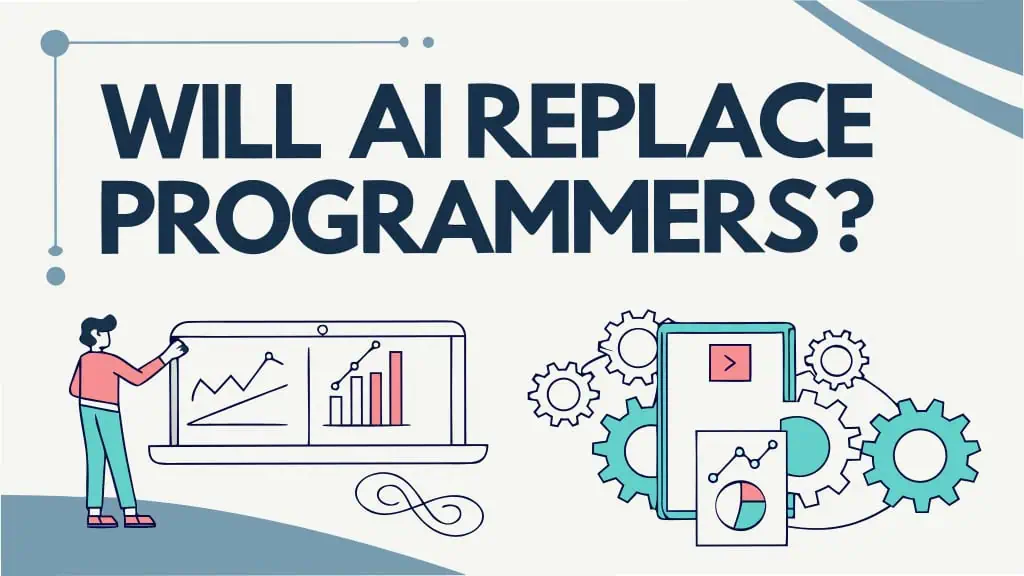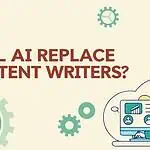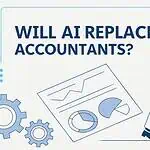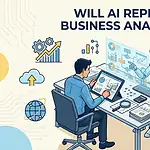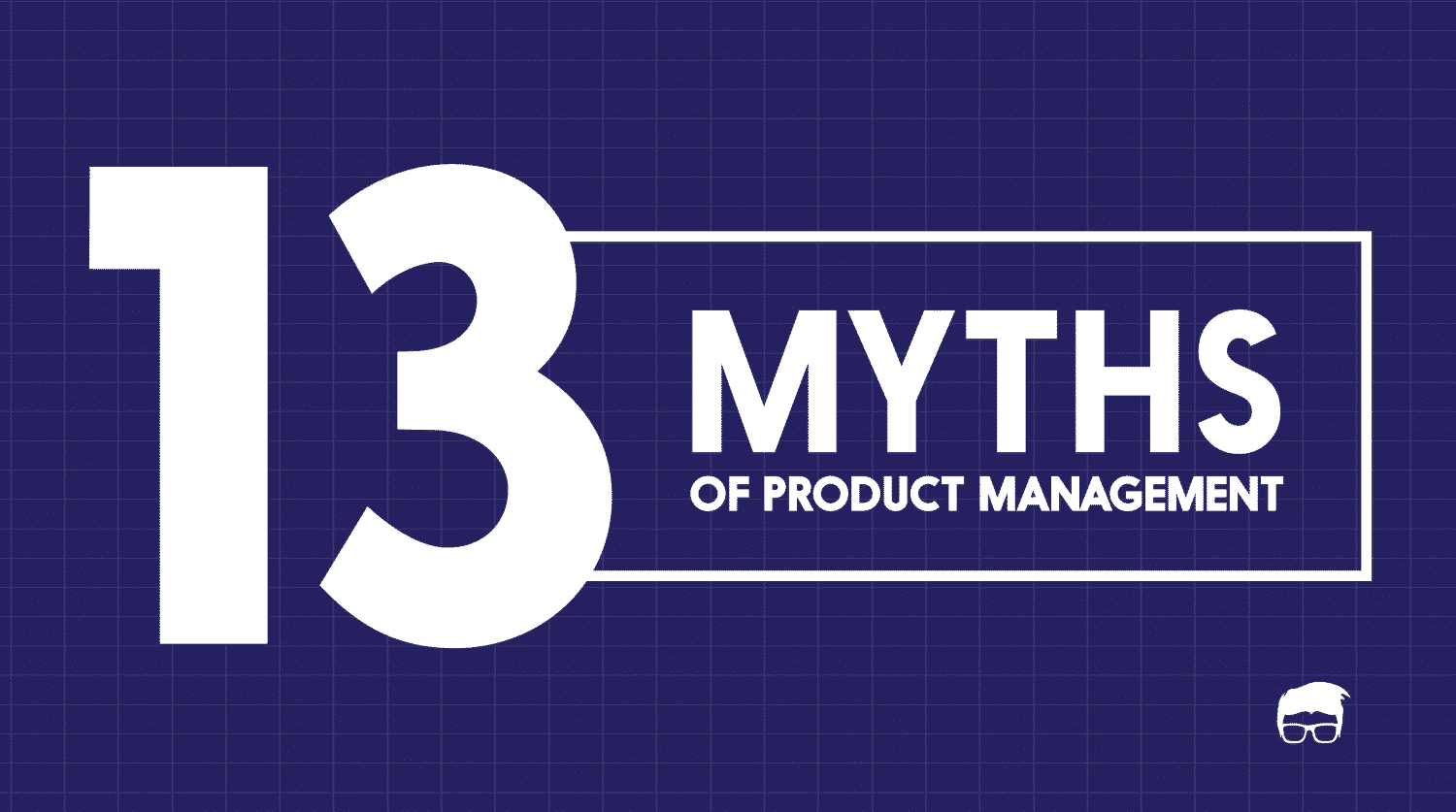You’ve probably watched an AI tool autocomplete an entire function you were about to write. And somewhere in the back of your mind, a question keeps popping up: if this thing can write my code, how long before it can do my job?
The tech you use daily is getting better fast. AI coding assistants went from suggesting variable names to building entire features.
So yeah, wondering “will AI replace programmers?” isn’t dramatic. It’s practical. And it deserves an honest look at what’s actually happening right now.
Why Are Programmers Worried About Being Replaced?
The anxiety isn’t coming from nowhere. Here’s what’s keeping developers at edge:
- Speed of AI tools: AI tools generate in seconds what used to take hours. You’ve seen it write boilerplate, debug issues, and even refactor messy code faster than you can grab coffee.
- Junior roles looking vulnerable: Entry-level tasks like writing basic CRUD operations or fixing simple bugs are exactly what AI handles best. If you’re early in your career, that hits different.
- Companies talking about efficiency: Every tech blog and conference has someone celebrating how AI “boosted productivity by 40%.” Translation? Fewer developers needed for the same output.
- The learning curve keeps shifting: You spent years mastering frameworks and languages. Now there’s pressure to stay relevant by learning how to work alongside AI or risk looking outdated.
Current State of AI Adoption in Programming
Let’s look at the actual numbers. Because feelings are one thing, but data shows what’s really going on.
AI Coding Tools Market Growth
The money flowing into AI coding tools tells you where the industry thinks this is headed. According to recent market analysis, AI coding tools will hit a value of $15.11 billion in 2025. Projections say it’ll reach $99.10 billion by 2034, growing at 23.24% each year.
That’s not hype. That’s investment. Companies are betting big that AI will become standard infrastructure for software development. The same way version control or cloud hosting became non-negotiable, AI tools are heading that direction.
Developer Usage Statistics
But what about actual developers? Are people using these tools or just talking about them?
Turns out, 82% of developers now rely on AI tools to help write code. That’s not early adopters anymore. That’s mainstream.
41% of all code written today is AI-generated. Think about your last project. Almost half of what got pushed to production might’ve started as AI suggestions. That shift happened quietly, but it happened fast.
What this means is AI isn’t coming to programming. It’s already here.
AI Coding Tools Developers Are Using
According to recent data, GitHub Copilot has become an expected skill in AI engineering job requirements. Over 50,000 organisations have adopted it, with 1.3 million paid subscribers. That’s not hype. That’s mainstream adoption.
- GitHub Copilot sits inside your editor and suggests code as you type. It reads your context, understands your patterns, and offers completions. The tool learns your codebase over time, making its suggestions more relevant.
- Cursor takes a different approach. It’s an AI-first IDE built around the idea that you should be able to edit code by describing changes. You highlight a section, explain what needs to happen, and it rewrites it. The tool also lets you chat with your codebase, asking questions about how things work.
- Developers also use ChatGPT and Claude for problem-solving. Not embedded in the editor, but open in a browser tab. You paste an error message, describe what you’re trying to build, or ask for architecture advice. The models respond with explanations and code samples.
- Tabnine positions itself as the privacy-focused option. It runs locally or on private servers, which matters for companies handling sensitive codebases. The suggestions aren’t as aggressive as Copilot, but developers who can’t share code with external APIs find it useful.
- Replit AI focuses on rapid prototyping. You describe an app, and it scaffolds the entire project. Frontend, backend, database schema. It’s less about individual line suggestions and more about generating starting points you can iterate on.
What’s interesting here is how quickly this became normal. Two years ago, AI code suggestions felt experimental. Now they’re part of the hiring criteria. Companies expect developers to know how to work with these tools, not just traditional IDEs.
The adoption patterns show something important. Developers aren’t replacing their skills with AI. They’re adding AI to their toolkit, the same way they added version control or package managers.
Programming Job Market Impact
Evidence shows demand for entry-level programmers is in free fall. That’s not fearmongering. That’s what researchers are finding when they dig into employment data.
Junior Developer Positions
Here’s where it gets specific. Stanford researchers analysed Current Population Survey data comparing employment in AI-exposed versus non-exposed programming professions. What did they find? Young workers aged 22 to 25 in AI-exposed jobs saw significant employment declines.
The thing is, senior developers aren’t seeing the same hit. Experience still matters. But if you’re trying to break into the field right now, you’re competing against tools that can write basic code for free.
Hiring Trends in 2025
Companies are rethinking what they need. The World Economic Forum surveyed over 1,000 companies on GenAI’s impact on the labour market, and the patterns are clear. Businesses are using AI to handle tasks they used to hire for.
But here’s what you can’t ignore. Employment is actually growing in roles where AI helps workers instead of replacing them. The jobs aren’t vanishing completely. They’re changing shape.
You’re still working through what this means long term. Companies might be cutting entry-level roles now, but they’ll need skilled developers later. Where will those developers come from if nobody’s training them?
Programming Tasks AI Has Already Replaced
Let’s be honest about what AI can do today. These tasks used to eat up hours of a developer’s week:
- Boilerplate code generation. Setting up project structures, config files, and standard functions. AI churns these out faster than you can type.
- Basic debugging. Syntax errors, missing semicolons, undefined variables. AI spots them instantly and suggests fixes.
- Code documentation. Writing comments and docstrings used to be tedious. Now AI reads your code and explains what it does.
- Simple API integrations. Connecting to common APIs like payment processors or authentication services. AI knows the patterns.
- Unit test creation. Writing basic test cases for functions. AI can generate decent test coverage automatically.
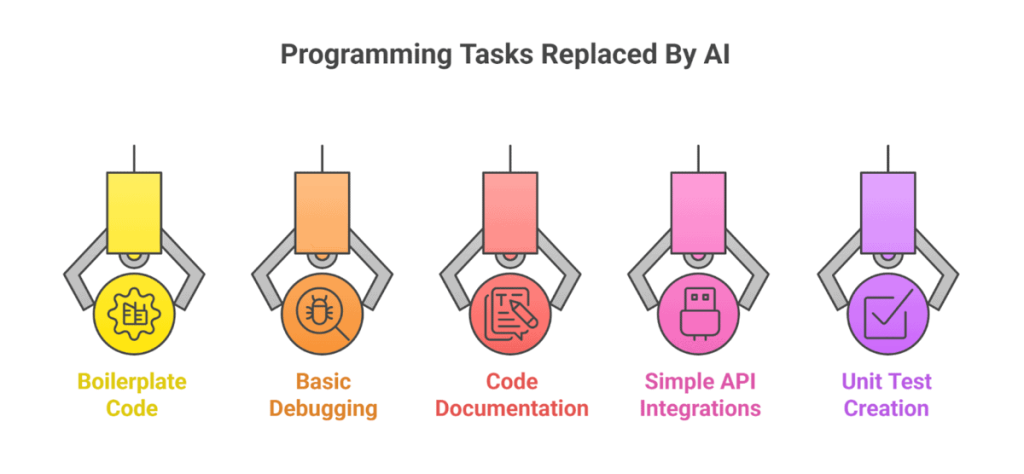
Tasks AI Will Replace Soon
From what you can tell, these are next on the chopping block:
- Database query optimisation. AI is getting better at analysing slow queries and rewriting them efficiently. It’s not perfect yet, but it’s learning fast.
- Code refactoring. Taking messy code and cleaning it up follows patterns. AI is starting to handle medium-complexity refactoring jobs.
- Basic feature implementation. When requirements are crystal clear, AI can build straightforward features end-to-end. The emphasis is on straightforward.
- Cross-platform code conversion. Translating code from one language or framework to another. AI already does this, okay? It’ll get much better.
You’re not entirely convinced the timeline is as fast as some people claim. But the direction seems pretty clear.
What AI Cannot Replace
This is where human developers still win, and likely will for a long time:
- Understanding business context. AI doesn’t sit in meetings with stakeholders. It doesn’t know why the CEO wants a feature or what problem customers actually face.
- Making architectural decisions. Choosing between microservices and monoliths, deciding on databases, planning for scale. These need judgement calls AI can’t make.
- Debugging complex systems. When production breaks at 2am and logs point everywhere, you need someone who understands the whole system. AI suggests possibilities. Humans figure out what actually went wrong.
- Mentoring and collaboration. Teaching junior developers, doing code reviews that help people grow, and building team culture. You can’t automate relationships.
- Ethical and security judgement. Deciding what data to collect, how to handle edge cases, and whether a feature respects user privacy. These need human values, not algorithms.
Plus, someone needs to know when AI is giving you garbage code that compiles but creates security holes.
How Programmers Can Stay Relevant
Here’s the thing. AI is changing the game, but it’s not ending it. You just need to play smarter. Here are the strategies that’ll keep you ahead:
1. Become fluent in working with AI tools. This isn’t optional anymore. You need to know how to prompt these tools effectively, when to trust their output, and when to question it. The developers who thrive aren’t the ones avoiding AI.
They’re the ones using it to code faster while understanding every line it generates. Think of it like learning to drive. The car does a lot of the work, but you still need to know where you’re going.
2. Focus on system design and architecture. AI can write functions, but it can’t design entire systems that scale. Spend time learning how different services talk to each other, how to build for performance, and how to make smart trade-offs. This is where your human judgement becomes irreplaceable. You’re figuring out the big picture while AI handles the details.
3. Build your business understanding. Learn to speak the language of stakeholders. What problem are you actually solving? Why does this feature matter? How does it make money or save time?
Developers who understand business context become the ones leading projects, not just coding them. AI can’t sit in a meeting and figure out what the CEO really needs.
4. Double down on soft skills. Communication, collaboration, and critical thinking matter more now than ever. You need to explain technical decisions to non-technical people. You need to mentor junior developers through AI-assisted workflows. You need to spot when a solution looks good on paper but won’t work in practice.
5. Specialise in areas AI struggles with. Security, performance optimisation, legacy system migration, and debugging complex production issues. These aren’t going away. They require deep expertise and contextual understanding that AI tools don’t have yet. Pick an area where human expertise is still miles ahead and become the go-to person for it.
6. Never stop learning. The tech landscape is shifting fast. New frameworks emerge. Best practices evolve. AI capabilities expand. Set aside time each week to learn something new. Not just coding tutorials, either. Read about emerging technologies, try tools you haven’t used, and stay curious about where the industry is headed.
Will AI Really Replace Programmers?
AI won’t replace programmers entirely. But it’s already replacing certain types of programming work. Those entry-level jobs writing basic CRUD apps? Yeah, those are disappearing. The market is shifting toward developers who can do more than just translate requirements into code.
What you’re seeing is a redefinition, not an extinction. The role is evolving from code writer to system designer, problem solver, and AI orchestrator. You’ll spend less time typing syntax and more time making decisions about architecture, security, and user experience. The boring stuff gets automated. The interesting stuff becomes more important.
Here’s what you can’t ignore. The bar is rising. Being able to code isn’t enough anymore. You need to code well, understand systems deeply, and work alongside AI tools that are getting better every month.
Will there still be programming jobs in 10 years? Yes. Will they look like today’s jobs? Not really. And that’s the point. You’re not trying to hold onto the old version of this career. You’re building the skills for the new one.
A startup consultant, digital marketer, traveller, and philomath. Aashish has worked with over 20 startups and successfully helped them ideate, raise money, and succeed. When not working, he can be found hiking, camping, and stargazing.
